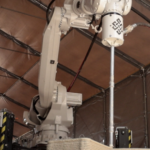Researchers have developed 3D-printed, customizable ostomy bags equipped with sensors and stimulators that significantly improve stoma care. In a recent study, these advanced bags reduced skin complications, leakage rates, and wearing time compared to traditional ostomy systems, offering a potential breakthrough for patients undergoing colorectal cancer or intestinal obstruction surgeries.

Addressing Common Challenges in Stoma Care
Traditional ostomy bags can cause various issues for patients, including skin allergies, inflammation, and leakage, all of which can severely affect quality of life. To address these challenges, researchers conducted a trial involving 113 patients who had undergone surgery that resulted in a stoma. Using handheld 3D scanners, the team captured the shape of each patient’s stoma and 3D-printed custom bags that were equipped with intelligent devices for real-time monitoring and adjustment. The patients were split into two groups: one group (n=57) used the 3D-printed bags, while the control group (n=56) relied on traditional one-piece pouching systems.
Impressive Results from 3D-Printed Ostomy Bags
The results demonstrated a clear advantage for the 3D-printed bags. Patients in the 3D group experienced significantly shorter wearing times (0.7±0.4 minutes) compared to those using traditional bags (9.1±3.5 minutes). Additionally, the leakage rate for the 3D group was only 1.75%, much lower than the 16.1% seen in the control group. Patients using the 3D-printed bags also showed fewer skin complications, with lower Discoloration, Erosion, and Tissue Overgrowth (DET) scores, and had a higher acceptance of illness, indicating improved comfort and adaptation to their condition.
A Promising Future for Stoma Care
This research highlights the potential of 3D-printed, intelligent ostomy bags in transforming stoma care. By reducing complications and improving patient outcomes, these custom bags offer a significant advancement over traditional systems. Future studies are expected to focus on broader clinical adoption and the long-term impacts on home care, which could revolutionize ostomy management in both hospitals and daily life.
Source: emjreviews.com









